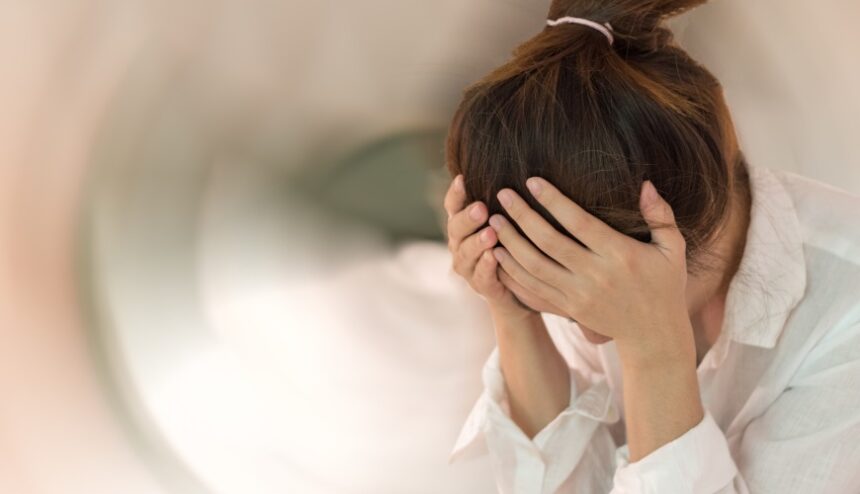By Michael Vig, PT, Therapy Services, Updated August 11, 2022
If you feel dizzy when lying down or rolling over in bed, when you get your hair washed at the salon, or when you’re doing a downward-facing dog pose in yoga—you may have Benign Paroxysmal Positional Vertigo (BPPV). BPPV is rarely serious, except when it increases your chance of falling.
Benign Paroxysmal Positional Vertigo
People who have BPPV usually do not feel dizzy all the time—the lightheadedness is triggered by head movements. Because people with BPPV often feel dizzy and unsteady when they tip their heads back to look up, it is sometimes called “top shelf vertigo.” As one of the most common causes of dizziness, it affects the older population more frequently and occurs in females more than males. It is estimated that more than 50% of these cases are of unknown origin, but aging and head trauma appear to contribute to the onset of BPPV.
The symptoms of BPPV may be mild to severe and include dizziness, lightheadedness, imbalance, and nausea (upset stomach). Activities that bring on symptoms will vary, but symptoms almost always begin with a change in the position of the head with respect to gravity. Getting out of bed or rolling over in bed are very common “problem” motions.
Many patients wake up with BPPV and become aware of vertigo while trying to sit up suddenly. The condition commonly causes involuntary eye movements. These movements are triggered by inner ear stimulation when the particles (crystals) become displaced in the inner ear canals.
Vertigo often lasts less than 60 seconds and subsides when movement is halted. It is during this time that your eyes may twitch (nystagmus) and most patients close their eyes to decrease their sense of being unsteady.
Unilateral Vestibular Loss
Another type of vertigo that’s fairly common is unilateral vestibular loss (UVL). This type of vertigo is caused by a weakness in the inner-ear balance that only affects one side.
Patients experiencing UVL feel more of a continuous loss of balance or disequilibrium when compared to BPPV’s spinning and dizziness episodes. UVL can occur quickly or over time, depending on the cause or medical diagnosis.
Those with UVL require more intensive rehab and therapy treatments. Homework is also needed to learn how to compensate for the disequilibrium rather than being able to fully recover from the symptoms, as with BPPV.
If your vertigo interferes with your normal daily activities or causes nausea and vomiting, you may need treatment. Most people recover with simple and effective head and neck maneuvers while lying down.
Physical therapists are specifically trained to treat BPPV and UVL and will also teach you exercises that can reduce or eliminate the symptoms, depending on which condition you have. The physical therapist will apply the appropriate maneuver to return the crystals to their correct position in the inner ear. Treatment can also include the use of infrared video goggles and demonstration apparatus for diagnostic and patient education. With BPPV, two to four treatments are usually needed, with most patients feeling significantly better and with their symptoms ending in one session.
Within three years of having BPPV, about 50% of people may have a recurrence, especially if the BPPV resulted from head trauma. Although your BPPV could return, you will be able to recognize the symptoms and keep yourself safe until you can get help.
Learn more about other therapy specialties at Glacial Ridge Health System in Glenwood, MN.


